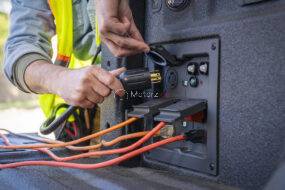The world of Motorsports Drag Racing 101 An Introduction to the World of Speed is an exhilarating realm, where speed, precision, and adrenaline converge to create an unforgettable experience. Among the many branches of Motorsports, drag racing stands out as one of the most thrilling and accessible forms of racing. In this article, we will take you through the fundamentals of drag racing, providing you with a comprehensive introduction to this high-speed world.
What is Drag Racing?
Drag Racing 101 is a Motorsport that involves two vehicles, typically cars or motorcycles, competing to accelerate down a straight-line track known as a drag strip. The goal is simple: to reach the finish line in the shortest amount of time, covering a standardized distance, usually a quarter of a mile (1,320 feet). Unlike other forms of racing where drivers must navigate curves and complex courses, drag racing is all about pure acceleration and top speed.
The Drag strip
The drag strip is the heart of any drag racing event. It is a specially designed and meticulously maintained track that provides a level playing field for competitors. A typical dragstrip consists of two parallel lanes, separated by a centerline, with a staging area at the starting line where vehicles prepare to race.
Staging
Drag Racing 101 Before a race begins, each driver must stage their vehicle. Staging involves positioning the car precisely in the starting area, often using a system of pre-stage and stage lights to ensure both vehicles are properly aligned. The pre-stage light indicates that the vehicle is close to the starting line, while the stage light signifies that the front tires are on or just past the line.
Tree Lights
The “Christmas Tree” is the signal system used to start a drag race. It consists of a set of lights that count down to the start of the race. The top yellow lights are activated first, followed by the green light, which signals the start of the race. A red light indicates a foul start, and the race is forfeited by the driver who jumped the start.
Classes in Drag Racing
Drag racing is incredibly diverse, with various classes catering to different types of vehicles and levels of performance. Some of the popular classes include.These are the fastest dragsters on the planet, powered by nitromethane-fueled engines capable of producing over 11,000 horsepower. Top Fuel cars can reach speeds of over 330 mph and cover the quarter-mile in less than 3.7 seconds. These are similar to Top Fuel dragsters but have a body resembling production cars. They also use nitromethane fuel and are known for their incredible speed and the spectacular flames that shoot from their exhaust pipes.
Pro Stock And Pro Modified
Pro Stock cars are based on production models and feature naturally aspirated engines. These cars are known for their precise tuning and competitive racing. These vehicles are heavily modified and can feature supercharged or turbocharged engines. Pro Mod cars are a fan favorite due to their unique and diverse designs. These classes are more accessible for amateur racers and feature a wide range of vehicles, including muscle cars, street-legal cars, and motorcycles.
How Drag Racing Works
Once the vehicles are staged and the tree lights are active, the race begins with a countdown to the green light. The drivers accelerate as quickly as possible, aiming to cover the quarter-mile distance in the shortest time. Timing is crucial in drag racing, and races are often decided by milliseconds. The winner is the first to cross the finish line without red-lighting (jumping the start) or crossing into the opponent’s lane.Safety is paramount in drag racing. Drivers wear specially designed fire-resistant suits, helmets, and other protective gear. Vehicles are equipped with safety features such as roll cages, fire suppression systems, and parachutes to slow them down after a run. Emergency personnel, including paramedics and fire crews, are always on standby at drag racing events.
Conclusion
Drag Racing 101 is a captivating motorsport that celebrates the sheer thrill of speed and acceleration. Whether you’re a casual spectator or an aspiring racer, understanding the basics of drag racing can enhance your appreciation for this adrenaline-fueled world. From the dragstrip to the staging area and the tree lights, drag racing is a blend of precision, skill, and raw power. So, the next time you hear the roar of engines and the screech of tires, you’ll have a better understanding of what makes drag racing an unforgettable experience in the world of speed.





